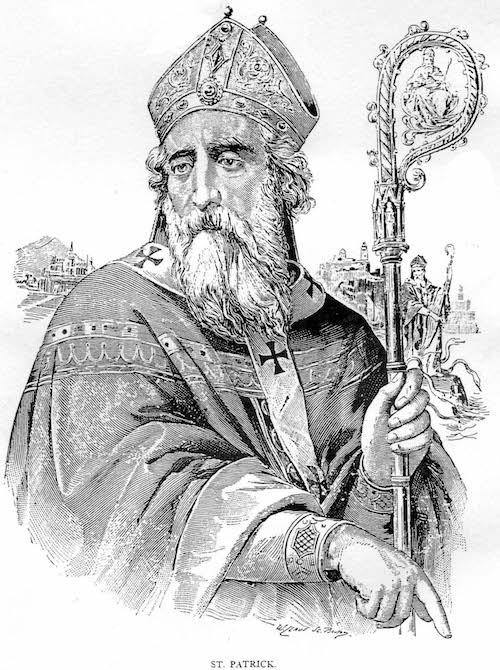March 4, 2020

When St. Patrick set foot in Ireland in the 5th century AD, he faced an uncertain future in a little-known country. Warring Celts were scattered in tribal groups across the island, ruled with iron might by five provincial kings. Eerie dolmen monuments and ancient ruins dominated the landscape. Even the Roman conquerors of Britain had not ventured this far – apart perhaps from the odd traveler or adventurer.
Against this backdrop, St. Patrick’s phenomenal success as a Christian missionary seems all the more incredible. By the end of the 15th century, Ireland had become a Christian nation.
Perhaps Patrick’s elevation into sainthood was therefore inevitable. But his prominence in the traditions and legends of the country says something of the reverence, awe and affection in which he has been held in the intervening centuries and which are rekindled in the Irish every St. Patrick’s Day.
The Feast of St. Patrick is now celebrated in nearly every country throughout the world where Irish descendants or influence have continued to reinforce is popularity. Among the countries with centuries-old traditions of celebrating St. Patrick’s Day were obviously the United States, Canada and Australia, but less obviously France and Argentina and even the Caribbean island of Montserrat. Nowadays it is also celebrated in countries such as Russia and Japan.
In Britain - Ireland’s closest neighbor and its biggest visitor market - the Trojan efforts of a large population of Irish descent have established March 17 as a day of celebration for British and Irish alike.
•••
Who was St. Patrick?
The man largely responsible for converting Ireland to Christianity over nearly 30 years, up to the year 462 AD or thereabouts - even if the work had been started by other missionaries before him.
Was he real then?
Most definitely, even if the facts about his life have been freely mingled over the centuries with legend and make-believe, his existence is authentic. A written document, his Confession, is tangible evidence of his authenticity.
Where did he come from?
An important thing to remember about Patrick is that he was not Irish. In fact he was what nowadays at least would be called British, even if he was of Roman parentage.
Where in Britain did he originate?
To be honest, nobody knows. Patrick himself refers in his writings to his father owning a holding near the village of Bannavem Taberniae, but there is no such name on any map of Roman Britain. The date of his birth is commonly given as circa 389 AD.
How did he first arrive in Ireland?
As a 16 year old named Succat, he was captured in a raid by the Irish King, Niall of the Nine Hostages, and sold into slavery, working as a herdsman for six years on Slemish Mountain in County Antrim. Irish pirate chieftains were given to raiding the western coast of Britain in those days. Hence, it has traditionally been assumed that Patrick originally came from South Wales, probably along the Severn Valley, which could also mean that he came from Gloucestershire. Modern scholars however, are more inclined to think of Strathclyde as being more likely.
How was that slave turned into a missionary?
After six years, Patrick managed to escape from his master, Milchu - legend has it that he was told of a waiting ship in a dream - and made his way back to Britain. According to Patrick, he had another dream of monumental importance. In it, The Voice of Ireland called to him to return to that country as a Christian missionary. As a result, he went to France, some say, studied to become a Christian and a missionary at the monastery of Auxerre, near Paris, and later was ordained a priest. In 432 AD, now a bishop named Patricius, he was sent by the Pope to Ireland to take up where a previous missionary Bishop, Palladius, had left off.
Information courtesy Tourism Ireland.

